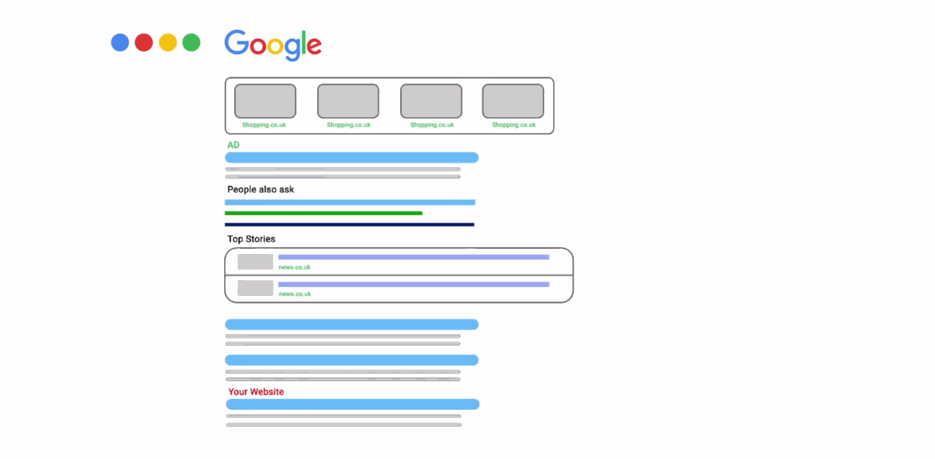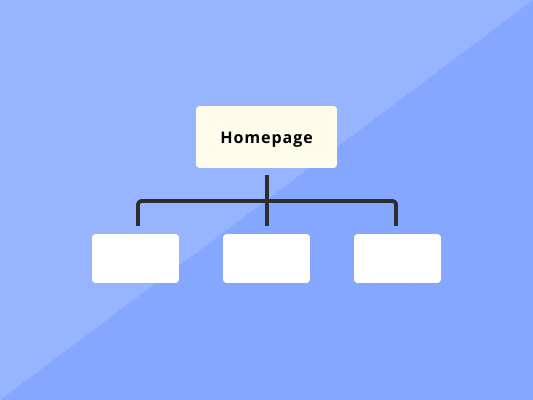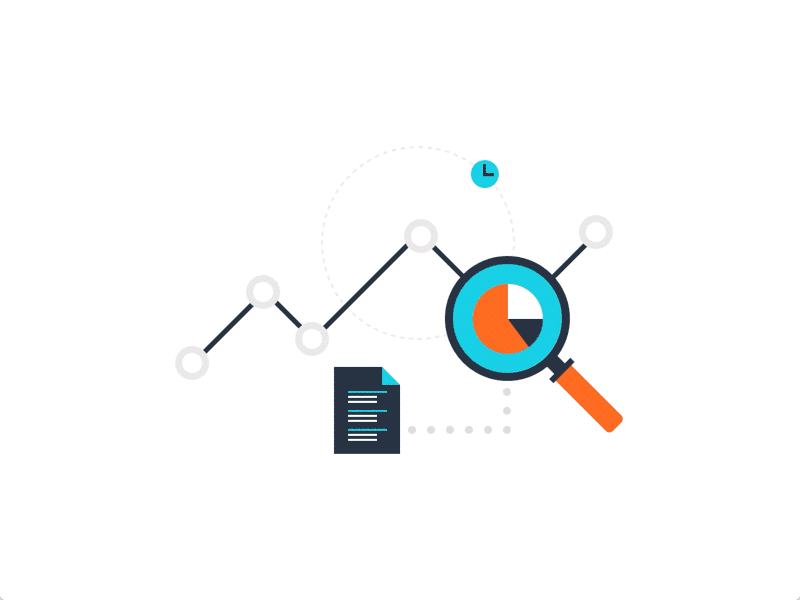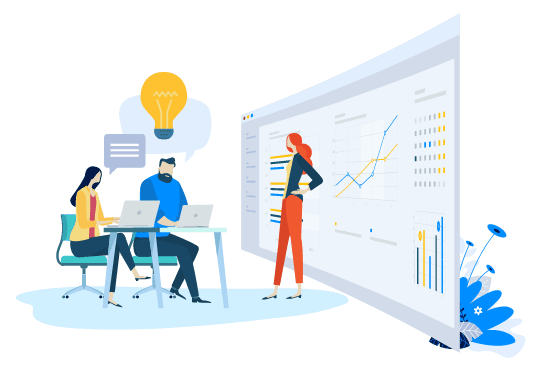Search Engine Positioning: Tips For Better Rankings
Getting your website noticed on search engines can be tricky. Many of us work hard, but our pages still sit low in the search results. This can feel frustrating and keeps people from finding what we offer.
Lots of people face this every day while trying to grow their business or blog through SEO.
Google uses many signals, such as quality content and site speed, to decide rankings. After looking into tools like Google Search Console and reading tips shared by experts, it’s clear there are ways to tackle these ranking issues.
In this guide, you’ll find simple ways to improve SEO using keyword research, clearer meta descriptions, optimised images with alt text, link-building strategies, and technical fixes like secure connections and mobile-friendly designs.
Each tip is meant to help boost your place on the search engine results page with easy steps you can follow.
Continue reading if you would like higher rankings without feeling lost or overwhelmed!
Understanding Search Engine Positioning
Search engine positioning helps our site appear higher in search results, which brings in more organic traffic from Google and other search engines. To improve this, we use strategies such as keyword research, content optimisation, and tools like Google Search Console to track progress and spot growth opportunities.
Difference between SEO and SEM
SEO stands for search engine optimisation. We use SEO to improve our site’s visibility on unpaid, organic results in web search engines like Google. SEO depends on keyword research, content quality, link building and technical fixes using tools such as Moz Pro or Google Search Console.
Algorithms update regularly. So, we must adapt our strategies often to keep high rankings.
SEM means search engine marketing and covers both organic methods and paid ads (like Pay-Per-Click). SEM gives faster results with Google Ads but needs a budget. SEO builds trust over time and brings long-term benefits through solid placement on the search engine results page (SERP).
Let’s now see why strong organic rankings matter for driving consistent traffic from the web.
Importance of organic rankings
High organic rankings drive most of our web traffic. In fact, organic search controls 53 per cent of all website visits according to the 2019 BrightEdge study. Strong positions in Google Search mean users find us before they see any paid results.
This boosts both our visibility and trust with customers, since people often click on top non-advertised links first.
We gain this advantage without spending money on ads or pay-per-click campaigns. Good search engine optimisation, relevant keyword research, and quality content all support these high placements.
Our focus on technical SEO tools such as Google Search Console and Moz Pro helps keep us ahead of competitors seeking the same spots.
The higher we rank on organic searches, the more credible and established we appear online; these positions lead to steady incoming visitors who are interested in our services or products.
High-quality backlinks from authoritative sites further cement our status in search engines’ eyes, increasing domain authority over time.
On-Page Optimisation Tips
We can boost our search engine rankings by fine-tuning each page with relevant keywords and clear, descriptive headings. Using tools like Google Search Console helps us track improvements and spot areas for better content optimisation.
Conduct keyword research
Keyword research tools like Google Search Console and Moz Pro help us find the words people use in their searches. These tools show which search terms drive organic traffic to our website, making it easier for us to target what users want.
By focusing on long-tail keywords and local SEO phrases, we can reach a more specific audience and improve our search engine ranking.
It is important to avoid keyword stuffing as this may cause penalties from search engines like Google. We choose high-quality, relevant keywords that match real user intent instead of just repeating popular phrases.
This strategy improves our on-page SEO and supports better content optimisation across title tags, meta descriptions, and structured data fields. Now let’s focus on crafting high-quality, keyword-rich content to move our rankings higher.
Craft high-quality, keyword-rich content
We focus on creating high-quality content that people actually want to read. Each page gives real value, uses clear language, and answers common search intent. We make sure each piece is unique; we never copy or use duplicate content from other websites.
Rewriting old articles helps keep our material fresh and up-to-date—this matters because outdated information can hurt organic traffic.
To boost rankings in search engines like Google, we add important keywords such as “search engine optimisation”, “on-page SEO”, and “user experience” in natural spots throughout the text.
We avoid keyword stuffing since it makes our writing sound fake and spammy. Using tools like Google Analytics lets us track which topics work best for our audience—a great way to plan future updates or new stories.
Use descriptive and optimised titles
Descriptive and optimised titles act as one of the first things people see in search engines. Title links affect click-through rates in Google searches; they help users pick our page over others.
Using clear words that match user intent boosts both organic traffic and user experience. We include main keywords, like “search engine optimisation,” “on-page SEO,” or “high-quality content.” These make it easy for search engine crawlers to recognise what our page covers.
Google Search Central suggests writing unique title tags for every web page. Long-tail keywords often fit well within these titles, drawing more targeted visits from local searches or specific queries such as “local SEO tips.” Titles should stay between 50 to 60 characters so that they display fully in results pages.
Tools like Moz Pro can test if a headline gets cut off or has strong search visibility. Crafting each title carefully helps us improve rankings and encourage clicks while supporting technical SEO best practices at every step.
Write compelling meta descriptions
Meta descriptions act as short summaries under title tags on a search engine results page. We craft each meta description to be clear, engaging and between 150-160 characters. This helps boost click-through rates by quickly telling users why our content matches their search intent.
Using keyword research from tools like Google Search Console or Moz Pro, we choose target phrases that attract organic traffic.
From experience, writing a strong meta tag can set us apart from competitors and draw more eyes to our site. For example, adding action words and benefits makes the snippet inviting—users often pick results that sound useful right in the preview text.
A good meta description must include main keywords but stay natural so we avoid keyword stuffing; this balance improves user experience while meeting technical SEO needs. Search engines may highlight these keywords if they match the user’s query, helping improve ranking on organic search results.
Add and optimise images with alt text
High-quality images can help boost search engine visibility. We always pair our images with text that matches the topic and keywords, such as “search engine optimisation” or “on-page seo.” This makes our pages more attractive to both users and search engines like Google Search Console.
We write clear, meaningful image alt text using strong keywords. For example, for a chart showing keyword research data from 2023, including terms like “long-tail keywords,” “organic traffic,” or “content optimisation” in the alt text helps improve discoverability.
Alt text also improves accessibility for screen readers. Search engine crawlers use this information to understand what each picture shows. Using tools like Moz Pro or Google Analytics lets us test how well optimised images perform in driving organic rankings and user engagement.
Next, we focus on internal linking for a solid site structure that helps users and crawlers move through our pages with ease.
Internal linking for site structure
Good internal linking helps us organise our site and guide both search engines and users. By linking pages with relevant anchor text, we make content easier to find and boost page authority.
Google Search Central shares that logical site organisation can improve how search engine crawlers discover new pages. If we use descriptive URLs and connect related posts or topics, such as “local SEO” or “structured data”, visitors stay longer and click through more pages.
We distribute link equity by carefully placing links within keyword-rich content. This way, important articles like guides on meta descriptions or technical SEO gain more weight in organic rankings.
For instance, adding links from high-traffic blog posts to newer content helps balance value around the website according to current best practices in digital marketing.
Technical Optimisation for Better Rankings
We focus on making our websites faster, safer, and easier for both people and search engine crawlers. This helps boost rankings in search engines like Google and improves how users interact with our site on mobile devices.
Ensure mobile-friendliness
Google switched to mobile-first indexing back in November 2016 because people started using their phones more than desktops for browsing. Today, over half of web traffic comes from mobiles, so our websites must work well on small screens.
Search engines like Google use mobile-friendliness as a major ranking factor. If our pages do not display or load properly on smartphones and tablets, we risk losing out on organic search traffic.
We check mobile usability through tools like Google Search Console and the Mobile-Friendly Test. Simple site navigation matters, along with easy-to-read text and responsive design that adjusts to all devices.
Clear images with optimised image alt text help user experience too. By making sites fast and smooth for everyone—no matter the device—we boost both core web vitals scores and search engine rankings in local SEO, international searches, and more.
Improve site loading speed
After making sure our website is mobile-friendly, we need to focus on site loading speed. Fast loading times boost user experience and keep visitors from leaving too soon. In fact, research shows that sites taking more than three seconds to load lose almost 40% of users.
Slow-loading websites can lead search engines like Bing and Yandex to drop our rankings because they want to promote quick, efficient results for searches.
We should use tools such as Google Search Console and PageSpeed Insights to test our site speed often. Compressing images, reducing scripts, fixing broken links, and using browser caching help improve performance scores in Core Web Vitals reports.
Securing the website with HTTPS also helps browsers load pages faster and protects user data at the same time. By boosting site speed, we meet both technical SEO guidelines and enhance organic traffic through better search engine positioning.
Use HTTPS for security
Site loading speed helps user experience, but security matters just as much to search engines and people. By switching our site from HTTP to HTTPS, we create a safe space for visitors while also sending positive signals to Google Search Console and other search engines.
HTTPS encrypts data between users and our website; this prevents hackers from stealing information. In 2014, Google started counting HTTPS as a ranking factor for organic search results.
We have seen improved trust with the green padlock next to our URL structure on browsers. Users click more often when they know their details are protected by SSL certificates. For sites handling sensitive information or doing social media marketing, this step can boost both rankings and credibility in ways that slow-loading sites without encryption miss out on.
Fix crawl errors
Crawl errors stop search engines from indexing our website. These problems can block pages from appearing in organic search results and hurt our rankings. Using Google Search Console, we track crawl errors fast.
We spot issues such as broken links, missing pages, or blocked resources in robots.txt files.
Fixing these errors means higher visibility and better user experience (UX). Let’s check if important content was crawled and indexed correctly—pages marked “not found” need quick fixes with redirects or updated URLs.
XML sitemaps help search engine crawlers find all of our high-quality content.
We must repair link structures, replace dead internal linking paths, update meta tags that block crawling by mistake, and make sure HTTPS is active everywhere. Every step brings us closer to better technical SEO performance on organic traffic sources like Google.
Create and submit an XML sitemap
We create an XML sitemap to help search engines, like Google and Bing, find every important page on our website. By listing all URLs, including blog posts and shop pages, we make sure Google Search Console and other search engine crawlers can index everything fast.
A clear sitemap improves discoverability for our site and supports better organic traffic.
After building the sitemap, we upload it directly to Google Search Console. This step allows us to track which pages are indexed or face crawl errors. Submitting the XML sitemap boosts our technical SEO by ensuring no high-quality content gets missed during indexing.
Using a tool such as Yoast SEO or Screaming Frog makes generating sitemaps quick and easy as well – saving time while improving search engine positioning.
Off-Page Optimisation Strategies
Off-page SEO gives our website authority, making it more trusted by search engines like Google. We can boost our rankings through smart use of link building and active social media marketing—these efforts often rely on tools such as Moz or Google Search Console to track success.
Build high-quality backlinks
Search engine optimisation depends on building high-quality backlinks. These links act like votes from other websites, showing Google and Bing that our content is trusted and valuable.
Authoritative websites boost our own site authority when they link to us, which helps improve our search engine ranking. Backlinks from news outlets, databases, or important forums carry more weight than random blogs or spammy directories.
We focus on outreach for guest posts and collaborate with industry experts to gain natural links. Tools like Google Search Console and backlink analysis software help us spot new linking opportunities, keeping our profile healthy and free of low-quality or black hat SEO practices.
A study shared by Moz found that sites in the top results often have hundreds of quality backlinks pointing to them; ignoring this can leave us hidden beneath competitors.
Social media sharing comes next—helping spread our reach even further across platforms.
Leverage social media sharing
We boost our content’s reach and engagement by sharing it on platforms like Facebook, Twitter, LinkedIn, and Instagram. Social media marketing lets us drive more organic traffic to our website.
Each share increases the chance of earning backlinks from authoritative websites, which helps with link building and supports off-page SEO strategies. Google Search Console will show how social signals affect site visits.
Using eye-catching titles and images makes posts stand out in crowded feeds. Meta descriptions should be compelling since they display in social previews. By mixing strong keywords into our posts—such as “search engine optimisation” or “user experience”—we attract people who care about these topics.
As we engage with users through comments or shares, brand-building becomes much easier, improving both awareness and search engine ranking over time.
Engage in brand-building activities
A strong presence on social media builds more than just followers, it opens doors for brand-building activities. We focus on growing our online reputation and authority by sharing high-quality content through different channels.
Google recognises brands with a clear identity and trusted voice, so we aim to showcase our expertise wherever possible.
We collaborate with authoritative websites using link building strategies while also making use of social media marketing tools like Search Console to monitor our reach. Sharing team stories or user experiences makes us relatable and increases trust among users.
These steps help us stand out during organic search results, push up our search engine ranking, and drive more organic traffic over time. This approach strengthens both off-page SEO efforts and site visibility in the eyes of Google’s search crawlers.
Content Strategies for Higher Rankings
Let’s make our content stronger by focusing on what users want, adding schema markup for better search features like featured snippets and People Also Ask, and using tools such as Google Search Console to spot ways we can improve—read on to see how these steps help us reach higher positions in organic traffic.
Create user-focused content
We place our users at the centre of our content. We answer their questions with high-quality information, drawing from keyword research and data in Google Search Console to guide us.
Content must address search intent clearly using easy words and short sentences. Users seek up-to-date details, so we update old posts often and add new facts or case studies as they surface.
Our writing avoids keyword stuffing, hidden text, or excessive links that make reading hard. By focusing on user experience (UX), we use internal linking for clear site structure and include descriptive image alt text for better access.
High-quality content helps us earn more organic traffic while following search engine optimisation (SEO) best practices like schema markup for rich results in Google Search Central and accurate meta descriptions that match what searchers want to know.
Update old content regularly
Creating user-focused content gives us a strong base, but keeping that content current is just as vital for search engine optimisation. Search engines reward fresh information, so we review past articles often to spot outdated facts or figures.
For example, updating a guide on Google Search Console with the latest 2024 features tells crawlers our site stays active and useful.
Regular updates improve organic rankings by showing continuous site activity. We refresh meta descriptions, add new keywords from recent keyword research, and update any technical terms or tips about tools like analytics software or backlink platforms.
By replacing broken links, improving image alt text, and revising internal linking paths, we enhance user experience while meeting search engine policies on quality. This practice helps avoid duplicate content issues; it also keeps visitors returning since they know they will find accurate details every time they check our pages.
Use structured data and schema markup
We add structured data, such as schema markup, to help search engines like Google understand our content better. By using Article, Local Business, FAQ, or Product Snippet schemas from Schema.org in our HTML code, we can show review stars and carousels in organic search results.
This makes our listings stand out on the SERP and invites more clicks from users.
Google Search Console helps us test if we set up schema markup correctly on our pages. We follow guidelines from Google Developers and make use of JSON-LD formats for technical SEO improvements.
Using structured data supports local SEO too; for instance, a Local Business or FAQ type can boost visibility for people searching nearby services. This part of on-page SEO often leads to higher organic traffic by making sure crawlers fully grasp what each page offers users.
Optimise for featured snippets
To appear in featured snippets, we focus on answering search intent clearly and directly. We use simple language and craft high-quality content that matches what people type into Google Search.
Google Search Console and keyword research tools help us find common questions and long-tail keywords. By using structured data like schema markup, we signal information to search engines so our answers stand out.
We format sections with bullet points or numbered lists for easy scanning by both users and search engine crawlers. Descriptive titles, accurate meta descriptions, and relevant image alt text give extra clarity.
Featured snippets can boost our visibility while increasing click-through rates — making this an effective part of content optimisation.
Tools to Improve Search Engine Positioning
We can boost our search engine optimisation efforts by using smart and simple tools. These systems help us find better keywords, check site performance, and spot strong link opportunities quickly—making digital growth easier for everyone.
Keyword research tools
Keyword research tools play a key role in search engine optimisation. We use them to find the best keywords for our content. Tools like Keyword Difficulty Checker help us spot which phrases are hard or easy to rank for.
SERP Checker lets us see what already ranks on Google Search, helping us shape our strategy around strong competitors and relevant search intent.
These tools support smart decisions, whether we focus on long-tail keywords or popular queries. Using keyword research, we avoid keyword stuffing and boost organic traffic. Platforms such as Google Search Console give insight into real user searches leading to our site; this helps improve meta descriptions, title tags, and even image alt text with stronger target words.
With accurate data, we make content that matches user needs and lifts our position in search engines fast.
Analytics and performance monitoring tools
After sorting out keyword research tools, we turn our attention to analytics and performance monitoring tools. These are essential for tracking site progress in search engine positioning.
Google Search Console and Bing Webmaster Tools both offer detailed reports on how our pages perform in search engines. We can see clicks, impressions, crawl errors, and even which keywords drive the most organic traffic.
Using these insights helps us spot issues like duplicate content or broken links. Data from these platforms highlights trends in user behaviour and guides us to tweak on-page SEO or improve title tags if needed.
Monitoring metrics such as bounce rates, page loading speed, and core web vitals boosts our understanding of user experience. With this information at hand, we adjust strategies quickly to keep up with changes from Google Search Central or shifts in audience search intent.
Backlink analysis tools
Backlink analysis tools like Ahrefs, SEMrush, and Moz help us check our backlink profiles. We use these tools to spot high-quality backlinks that boost site authority and improve search engine positioning.
These platforms let us track nofollow links, anchor text trends, spammy sources, and link growth over time. For example, Google Search Console gives deeper insights about which sites send organic traffic to us.
High-quality backlinks matter for good rankings in search engines like Google. We find gaps in our link building strategies by comparing ourselves with top competitors or industry leaders using these tools.
With data from 2024 reports on link quality and referring domains, we can focus on building better connections instead of low-value links that might hurt our SEO efforts under Google Developers’ Site Policies.
Common Mistakes to Avoid
Many websites slip in rankings by using too many keywords, ignoring technical search engine optimisation, or linking to poor-quality sites—read on to learn how we can keep our search results strong and steady.
Overusing keywords (keyword stuffing)
Stuffing a page with keywords like “search engine optimisation” or “long-tail keywords” may seem clever, but it backfires fast. Search engines such as Google spot this trick and could penalise our site—dropping rankings instead of raising them.
In 2024, their spam policies catch keyword stuffing quickly, making it risky for anyone wanting better organic search results.
We focus on high-quality content that answers user questions and matches search intent. Our experience shows that using natural language flows works best for both people and search engine crawlers.
Tools like Google Search Console help us spot where we might be overusing popular words in title tags, meta descriptions or image alt text. By prioritising clarity over repeating key terms, we keep our SEO strategies safe from penalties and deliver real value to every visitor who lands on the site.
Ignoring technical SEO issues
Keyword stuffing damages our rankings, but ignoring technical SEO issues does even more harm. Missing basic things like mobile-friendly websites or secure HTTPS can push us out of organic search results.
Search engines, including Google, prefer sites that load fast and use proper url structure. Fixing crawl errors through Google Search Console helps search engine crawlers index our pages correctly.
We make sure to run checks using tools like Ahrefs and Screaming Frog to spot duplicate content or problems in robots.txt files. Fast site speed improves user experience, which leads to better positions in SERPs.
Creating and submitting an XML sitemap also guides bots efficiently across our site so nothing important gets missed during a crawl. We always keep local SEO signals strong for users searching near us too, as those small changes drive real gains in organic traffic every month.
Using low-quality backlinks
Using low-quality backlinks can harm our search engine optimisation (SEO) efforts. Google Search Central warns that spammy links, such as those from random directories or link farms, may lead to penalties.
In 2024, updates to spam policies have become stricter; websites with lots of poor backlinks risk losing organic rankings fast.
We need to focus on high-quality backlink building instead. From our own use of tools like Ahrefs and Search Console, we see clear dips in traffic after toxic links appear. Quality matters more than quantity for SEO success.
Instead of chasing easy links, let us secure mentions from trusted sites within our field using genuine content and descriptive anchor text—this improves both trustworthiness and user experience across all major search engines.
Monitoring and Maintaining Rankings
We keep a close eye on our positions using Google Search Console and analytics services. Analysing data helps us spot trends and make quick changes for steady growth in organic traffic.
Track rankings consistently
We track our search engine rankings every week using tools like Google Search Console. This helps us see if we are moving up or down in organic search results for important keywords such as “local SEO”, “high-quality content”, and “link building”.
If we spot drops, we can act fast to fix issues, whether it is technical SEO problems, poor site structure, or weak title tags. Consistent monitoring highlights new opportunities too; sometimes a page starts trending thanks to an update in meta descriptions or improved on-page SEO.
Using performance monitoring tools means we measure changes with accuracy. For example, by checking Google Analytics alongside Search Console data, we can match ranking shifts with changes in user behaviour or updates from search engines.
We always note which pages gain more organic traffic and which fall behind. This hands-on approach means no surprises—we stay ahead of algorithm tweaks so our strategies remain strong.
Time to analyse user behaviour and adjust our methods for better results next.
Analyse user behaviour and adjust strategies
We use analytics tools like Google Search Console to study user behaviour and site performance. By checking metrics such as bounce rate, click-through rate, and time on page, we can see which pages keep visitors engaged.
For example, if a blog post about structured data gets lots of traffic but few clicks on links, we improve internal linking or update our call-to-action.
User experience (UX) matters a lot for search engine optimisation (SEO). If users leave fast or skip important content, this signals problems with content optimisation or the meta description.
We adjust strategies based on real data from organic traffic changes or drops in rankings. Using feedback helps us tweak title tags, image alt text and even URL structure to match search intent better.
This hands-on approach lets us react fast to trends spotted in Google Analytics and improve both rankings and engagement over time.
Stay updated on algorithm changes
By studying user behaviour and adjusting our strategies, we gain a clearer picture of what works. Yet, search engines like Google update their algorithms at a rapid speed—statistics show that in 2010 there were about 1.5 changes a day.
We cannot ignore this pace if we want to succeed with search engine optimisation.
We use tools such as Google Search Central, official blogs, and social media platforms to track updates. Relying on trusted sites helps us spot major shifts quickly. If an algorithm change appears, it can affect rankings overnight—impacting organic traffic or even removing pages from featured snippets and People Also Ask boxes.
Staying alert means we adapt quickly by checking our keyword research results; reviewing content for quality, meta tags, descriptive URLs; and fixing issues flagged in Search Console or core web vitals reports.
This flexible approach protects our work from being left behind due to sudden rule changes by the main search engines.
Conclusion
We’ve shared useful ways to boost search engine positioning—using keyword research, high-quality content, on-page SEO, technical fixes, and strong backlinks. Each tip is simple enough for us all to use right away and can make a big impact with little effort.
Are we ready to update our meta tags or check Google Search Console for errors? A few small actions today may lead to more organic traffic tomorrow. Success in search relies on keeping things fresh, following good advice from places like Google Search Central, and always watching user experience as well as critical Core Web Vitals.
For those wanting more insights into structured data or site health checks, exploring trusted SEO guides and tools never hurts. Let’s start applying these tips together—we’ll see better rankings one step at a time!












